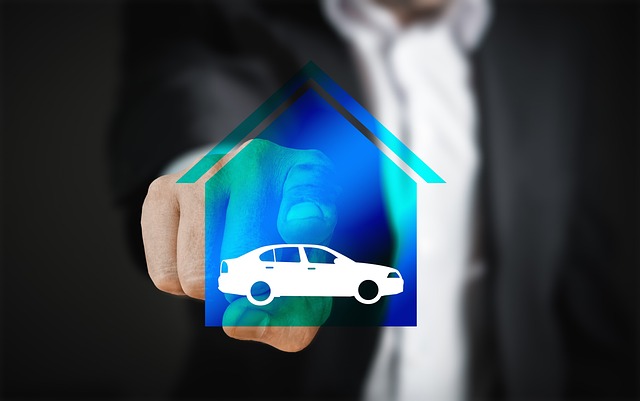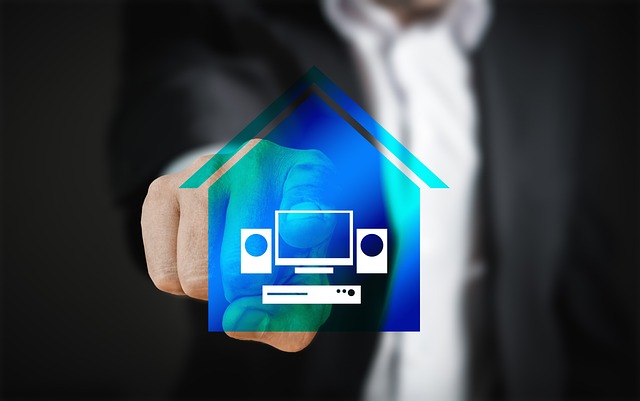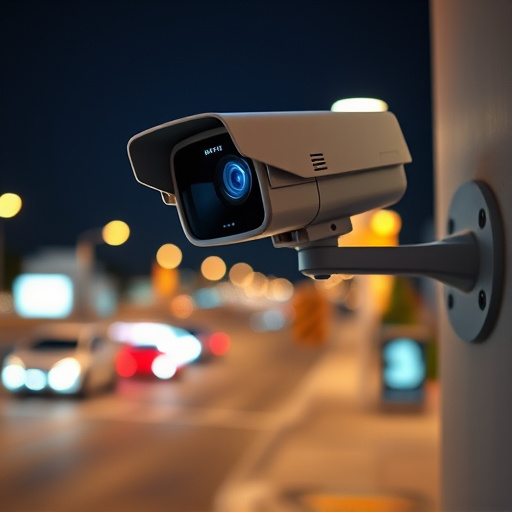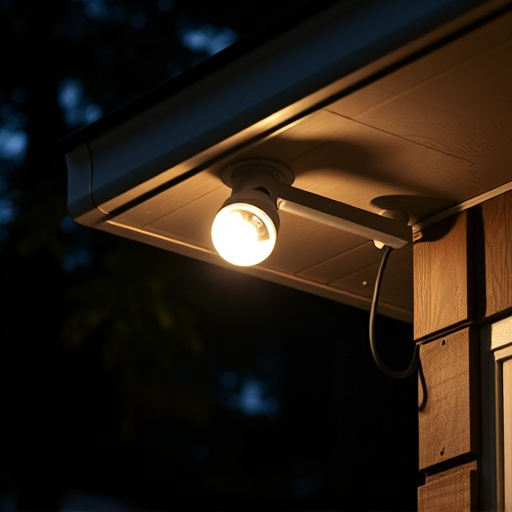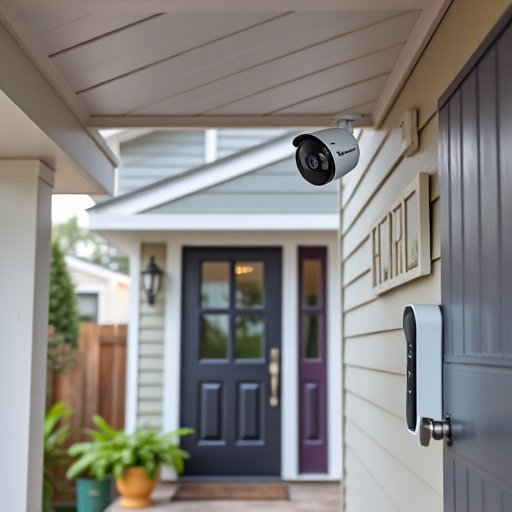Smart home devices have revolutionized home safety by creating integrated systems that surpass traditional measures. This beginner's guide highlights essential components like motion sensors, connected alarms, and a centralized smart home system controllable via smartphone. By installing smart locks, security cameras, and additional sensors, homeowners gain real-time monitoring, remote control, and enhanced protection. Regular testing and firmware updates ensure optimal performance. Integrating these technologies provides unprecedented convenience and peace of mind, with advanced features like AI-powered analytics and automated routines. Securing your smart home through strong passwords, two-factor authentication, regular firmware updates, and selective device connectivity is crucial for protecting personal data.
“Welcome to your comprehensive beginners’ guide to transforming your home with smart safety devices. In today’s digital age, securing your living space has never been smarter or easier. We’ll unlock the potential of ‘home safety technology,’ showing you how simple it is to set up a robust smart home protection system. From understanding key components to benefits like remote monitoring and automation, this guide covers everything. By the end, you’ll be equipped to enhance your home’s security with confidence.”
- Understanding Smart Home Devices: Unlocking a Safer Living Space
- Essential Components of Home Safety Technology for Beginners
- Setting Up Your Smart Home Protection System: A Step-by-Step Guide
- Benefits and Applications of Using Smart Devices for Enhanced Security
- Top Tips for Securing Your Smart Home and Personal Data
Understanding Smart Home Devices: Unlocking a Safer Living Space

Smart home devices have revolutionized the way we think about and achieve home safety. These technologies offer a level of protection and convenience that traditional security systems simply can’t match. By integrating smart home devices into your living space, you’re not just enhancing your security but also creating a smarter, more efficient environment.
A beginners guide to smart home safety devices should start with an understanding of the various components available. From motion sensors and smart cameras to automated locks and connected alarms, each device plays a crucial role in building a comprehensive home protection system. By using these smart devices, you gain real-time insights into your home’s activities, allowing for swift responses to potential threats. Moreover, many of these technologies can be controlled remotely via smartphone apps, providing peace of mind no matter where you are.
Essential Components of Home Safety Technology for Beginners
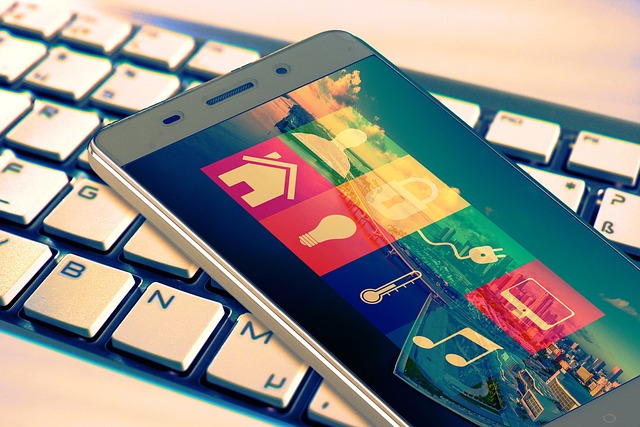
For beginners looking to explore smart home devices and enhance their home safety, understanding the essential components is crucial. The foundation of modern smart home protection lies in integrating a few key technologies. At the core, a robust smart home system acts as the central command center, allowing you to control and monitor various devices through a user-friendly app on your smartphone or tablet. This system enables remote access, giving you peace of mind no matter where you are.
Additionally, motion sensors and security cameras are indispensable tools for detecting intrusions and monitoring activities within your home. These devices can be set up to send alerts directly to your phone, allowing for swift responses. Further enhancing security, smart locks provide remote access control, enabling you to lock and unlock doors remotely and even grant temporary access to trusted individuals. By using these smart home devices together, beginners can create a comprehensive and effective home safety network.
Setting Up Your Smart Home Protection System: A Step-by-Step Guide

Setting up a smart home protection system can seem daunting, but with a simple, step-by-step approach, beginners can enhance their home safety in no time. Start by identifying the areas that require the most attention, such as doors and windows. Install smart locks on exterior entry points to control access remotely. Next, invest in a reliable security system that integrates with your chosen smart devices. Look for systems that offer monitoring services, allowing you to receive alerts when sensors are triggered.
Once your base setup is complete, expand your network by adding motion detectors, glass break sensors, and smoke alarms equipped with smart home technology. These devices provide an extra layer of protection and can be controlled via a user-friendly app on your smartphone. Regularly test the system to ensure everything functions correctly and update firmware when new updates are available for optimal performance and enhanced security features.
Benefits and Applications of Using Smart Devices for Enhanced Security

Integrating smart home devices offers a new level of convenience and security for homeowners. These technologies provide real-time monitoring and control of your home, allowing you to stay informed and connected even when away. Smart home safety devices like motion sensors, door/window contact sensors, and cameras can detect unusual activity and notify you instantly via your smartphone.
Beyond basic notification systems, these smart devices facilitate enhanced home protection through remote access, automated routines, and intelligent analytics. For example, smart thermostats can adjust settings based on occupancy, conserving energy while ensuring a comfortable environment. Security cameras with artificial intelligence capabilities can even differentiate between family members, pets, and potential intruders, minimizing false alarms. This holistic approach to home safety using smart devices contributes to greater peace of mind for homeowners.
Top Tips for Securing Your Smart Home and Personal Data

Securing your smart home and protecting your personal data is crucial when embracing modern home safety technology. As a beginner, start by focusing on the essentials. Use strong passwords for all your smart device accounts and ensure they’re unique across different platforms to prevent unauthorized access. Enable two-factor authentication where available; this adds an extra layer of protection, ensuring even if someone discovers one of your passwords, they still can’t gain entry.
Regularly update the firmware on your smart home devices as manufacturers often release patches for security vulnerabilities. Be cautious with what you connect to your network; not all smart devices are created equal in terms of security. Research and choose reputable brands that prioritize data protection. Consider implementing a separate guest network for visitors, isolating their devices from your main network and sensitive information.
